Fig (a) and (b) show the refracted ray BC through a convex and a concave lens respectively and their foci marked as F1 and F2. Complete the diagram by drawing each corresponding incident ray.
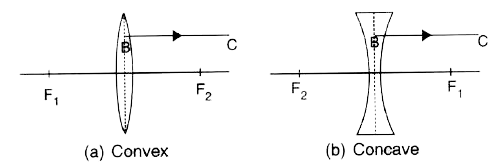
Fig. (a) and (b) show the refracted ray BC parallel to the principal axis. Therefore, the incident ray must be coming from the first focus F1 in the convex lens and must be travelling towards the first focus F1 in the concave lens. Thus, to find the incident ray, F1 is joined to the starting point B of the refracted ray and then produced backwards as BA. Then AB is the required incident ray. The completed diagram is shown is Fig. (a) and (b).
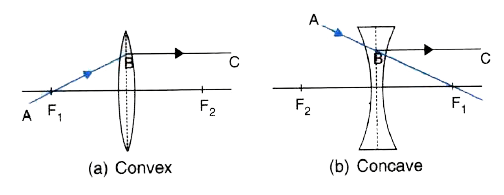
Topper's Solved these Questions
- REFRACTION THROUGH A LENS BOOK - ICSECHAPTER - REFRACTION THROUGH A LENS EXERCISE - EXERCISE-5(A)
12 Videos
- REFRACTION THROUGH A LENS BOOK - ICSECHAPTER - REFRACTION THROUGH A LENS EXERCISE - EXERCISE-5(A) (MULTIPLE CHOICE TYPE)
2 Videos
- REFRACTION OF LIGHT AT PLANE SURFACESBOOK - ICSECHAPTER - REFRACTION OF LIGHT AT PLANE SURFACESEXERCISE - EXERCISE-4(D) MULTIPLE CHOICE TYPE
3 Videos
- REFRACTION THROUGH LENSBOOK - ICSECHAPTER - REFRACTION THROUGH LENSEXERCISE - NUMERICAL BASED MCQ:
10 Videos
Similar Questions
The diagram below shown the refracted ray QR through a convex lens.
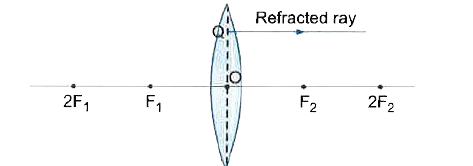
Complete the diagram by drawing the corresponding incident ray.
View SolutionThe diagram below shows the refracted ray QR through a concave lens. Complete the diagram by drawing the corresponding incident ray.
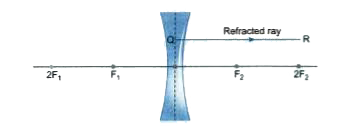
View SolutionDraw the refracted rays corresponding to incident ray 1 and 2
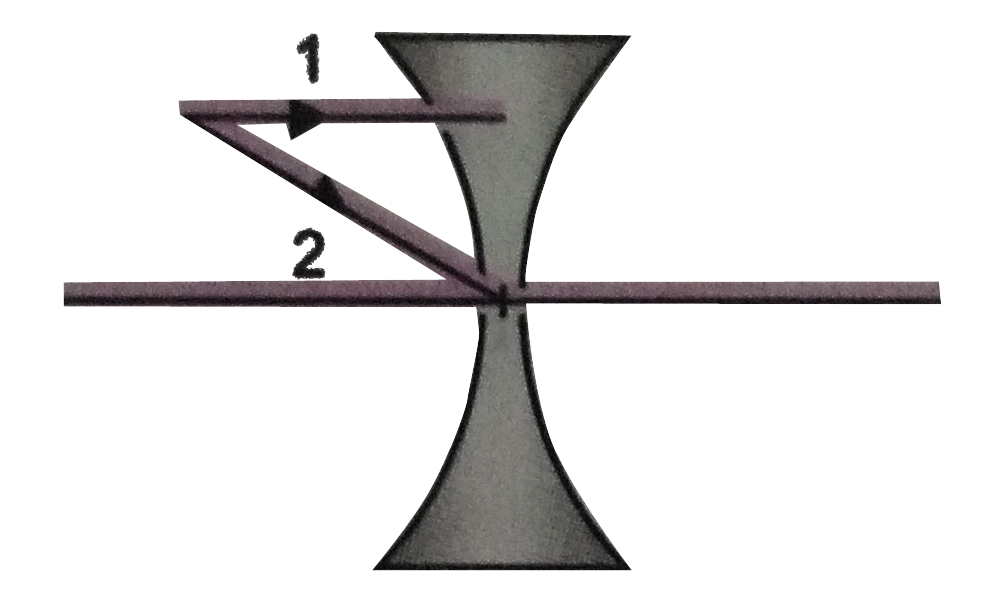
View SolutionDraw a ray diagram to show image formation by a concave lens.
View SolutionA ray of light, after refracting through a concave lens, emerges parallel to the principal axis. Draw a ray diagram to show the incident ray and its corresponding emergent ray.
View SolutionComplete the following diagrams in Fig. by drawing the reflected ray for the incident rays A and B.
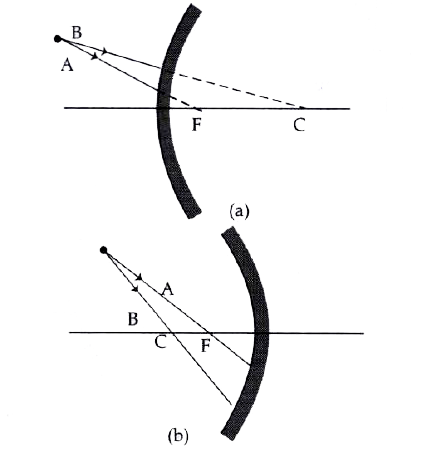
View SolutionComplete the following diagrams in Fig. by drawing the reflected ray for the incident rays 1 and 2.
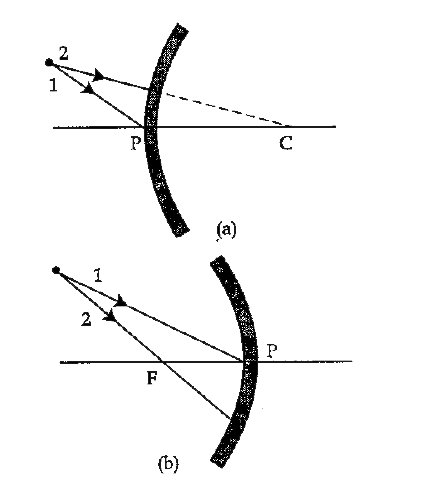
View SolutionDraw ray diagrams showing the image formation by a concave lens when an object is placed
(a) between focus and twice the focal length of the lens
(b) beyond twice the focal length of the lens
View SolutionDraw the ray diagram for an object located at 2F for a convex lens and write the nature of image.
View SolutionDraw ray diagram showing the image formation by a concave lens when an object is placed at the focus of the lens.
View Solution
